3-(2-Thienyl)propionic acid
Modify Date: 2024-01-04 19:02:42

3-(2-Thienyl)propionic acid structure
|
Common Name | 3-(2-Thienyl)propionic acid | ||
|---|---|---|---|---|
| CAS Number | 5928-51-8 | Molecular Weight | 156.202 | |
| Density | 1.3±0.1 g/cm3 | Boiling Point | 280.5±15.0 °C at 760 mmHg | |
| Molecular Formula | C7H8O2S | Melting Point | 46-49 °C(lit.) | |
| MSDS | Chinese USA | Flash Point | 123.4±20.4 °C | |
| Symbol |

GHS05 |
Signal Word | Danger | |
| Name | 3-(2-Thienyl)propionic acid |
|---|---|
| Synonym | More Synonyms |
| Density | 1.3±0.1 g/cm3 |
|---|---|
| Boiling Point | 280.5±15.0 °C at 760 mmHg |
| Melting Point | 46-49 °C(lit.) |
| Molecular Formula | C7H8O2S |
| Molecular Weight | 156.202 |
| Flash Point | 123.4±20.4 °C |
| Exact Mass | 156.024506 |
| PSA | 65.54000 |
| LogP | 1.52 |
| Vapour Pressure | 0.0±0.6 mmHg at 25°C |
| Index of Refraction | 1.571 |
Synonym: Section 2 - COMPOSITION, INFORMATION ON INGREDIENTS
Risk Phrases: 36/37/38 Section 3 - HAZARDS IDENTIFICATION EMERGENCY OVERVIEW
Irritating to eyes, respiratory system and skin. Potential Health Effects Eye: Causes eye irritation. Skin: Causes skin irritation. Ingestion: May cause irritation of the digestive tract. Inhalation: Causes respiratory tract irritation. Chronic: Not available. Section 4 - FIRST AID MEASURES Eyes: Flush eyes with plenty of water for at least 15 minutes, occasionally lifting the upper and lower eyelids. Get medical aid. Skin: Get medical aid. Flush skin with plenty of water for at least 15 minutes while removing contaminated clothing and shoes. Ingestion: Get medical aid. Wash mouth out with water. Inhalation: Remove from exposure and move to fresh air immediately. If not breathing, give artificial respiration. If breathing is difficult, give oxygen. Get medical aid. Notes to Physician: Section 5 - FIRE FIGHTING MEASURES General Information: As in any fire, wear a self-contained breathing apparatus in pressure-demand, MSHA/NIOSH (approved or equivalent), and full protective gear. Extinguishing Media: Use dry chemical to fight fire. Use carbon dioxide. Section 6 - ACCIDENTAL RELEASE MEASURES General Information: Use proper personal protective equipment as indicated in Section 8. Spills/Leaks: Vacuum or sweep up material and place into a suitable disposal container. Section 7 - HANDLING and STORAGE Handling: Avoid breathing dust, vapor, mist, or gas. Avoid contact with skin and eyes. Storage: Store in a cool, dry place. Store in a tightly closed container. Section 8 - EXPOSURE CONTROLS, PERSONAL PROTECTION Engineering Controls: Use adequate ventilation to keep airborne concentrations low. Exposure Limits CAS# 5928-51-8: Personal Protective Equipment Eyes: Not available. Skin: Wear appropriate protective gloves to prevent skin exposure. Clothing: Wear appropriate protective clothing to prevent skin exposure. Respirators: Follow the OSHA respirator regulations found in 29 CFR 1910.134 or European Standard EN 149. Use a NIOSH/MSHA or European Standard EN 149 approved respirator if exposure limits are exceeded or if irritation or other symptoms are experienced. Section 9 - PHYSICAL AND CHEMICAL PROPERTIES Physical State: Solid Color: white Odor: Not available. pH: Not available. Vapor Pressure: Not available. Viscosity: Not available. Boiling Point: Not available. Freezing/Melting Point: 155 - 158 deg C Autoignition Temperature: Not available. Flash Point: Not available. Explosion Limits, lower: Not available. Explosion Limits, upper: Not available. Decomposition Temperature: Solubility in water: soluble in ethanol, acetone Specific Gravity/Density: Molecular Formula: Molecular Weight: 156.11 Section 10 - STABILITY AND REACTIVITY Chemical Stability: Not available. Conditions to Avoid: Incompatible materials. Incompatibilities with Other Materials: Strong oxidizing agents. Hazardous Decomposition Products: Carbon monoxide, carbon dioxide. Hazardous Polymerization: Has not been reported Section 11 - TOXICOLOGICAL INFORMATION RTECS#: CAS# 5928-51-8 unlisted. LD50/LC50: Not available. Carcinogenicity: 3-(2-Thienyl)propanoic acid - Not listed by ACGIH, IARC, or NTP. Section 12 - ECOLOGICAL INFORMATION Section 13 - DISPOSAL CONSIDERATIONS Dispose of in a manner consistent with federal, state, and local regulations. Section 14 - TRANSPORT INFORMATION IATA Not regulated as a hazardous material. IMO Not regulated as a hazardous material. RID/ADR Not regulated as a hazardous material. Section 15 - REGULATORY INFORMATION European/International Regulations European Labeling in Accordance with EC Directives Hazard Symbols: XI Risk Phrases: R 36/37/38 Irritating to eyes, respiratory system and skin. Safety Phrases: S 26 In case of contact with eyes, rinse immediately with plenty of water and seek medical advice. S 37/39 Wear suitable gloves and eye/face protection. WGK (Water Danger/Protection) CAS# 5928-51-8: No information available. Canada None of the chemicals in this product are listed on the DSL/NDSL list. CAS# 5928-51-8 is not listed on Canada's Ingredient Disclosure List. US FEDERAL TSCA CAS# 5928-51-8 is not listed on the TSCA inventory. It is for research and development use only. SECTION 16 - ADDITIONAL INFORMATION N/A |
| Symbol |

GHS05 |
|---|---|
| Signal Word | Danger |
| Hazard Statements | H314 |
| Precautionary Statements | P280-P305 + P351 + P338-P310 |
| Personal Protective Equipment | Eyeshields;Faceshields;full-face particle respirator type N100 (US);Gloves;respirator cartridge type N100 (US);type P1 (EN143) respirator filter;type P3 (EN 143) respirator cartridges |
| Hazard Codes | C: Corrosive; |
| Risk Phrases | R34 |
| Safety Phrases | S26-S36/37/39-S45 |
| RIDADR | UN 3261 8/PG 2 |
| WGK Germany | 3 |
| HS Code | 2934999090 |
| Precursor 9 | |
|---|---|
| DownStream 7 | |
| HS Code | 2934999090 |
|---|---|
| Summary | 2934999090. other heterocyclic compounds. VAT:17.0%. Tax rebate rate:13.0%. . MFN tariff:6.5%. General tariff:20.0% |
| MFCD00047093 |
| 3-(2-Thienyl)propanoic acid |
| 3-thien-2-ylpropanoic acid |
| 3-thiophen-2-ylpropanoic acid |
| 2-Thiophenepropanoic acid |
| Eprosartan Impurity 2 |
 CAS#:1124-65-8
CAS#:1124-65-8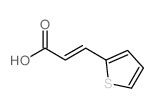 CAS#:15690-25-2
CAS#:15690-25-2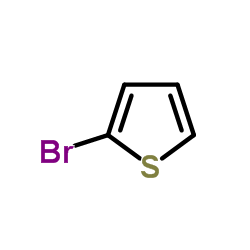 CAS#:1003-09-4
CAS#:1003-09-4 CAS#:3984-22-3
CAS#:3984-22-3 CAS#:16862-05-8
CAS#:16862-05-8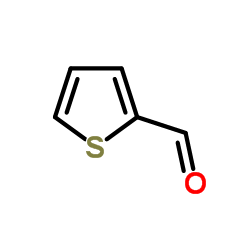 CAS#:98-03-3
CAS#:98-03-3 CAS#:2033-24-1
CAS#:2033-24-1![2-[(Thiophen-2-yl)methyl]malonic acid Structure](https://image.chemsrc.com/caspic/461/4475-24-5.png) CAS#:4475-24-5
CAS#:4475-24-5 CAS#:5722-13-4
CAS#:5722-13-4![5,6-Dihydro-4H-cyclopenta[b]thiophen-4-one structure](https://image.chemsrc.com/caspic/037/5650-51-1.png) CAS#:5650-51-1
CAS#:5650-51-1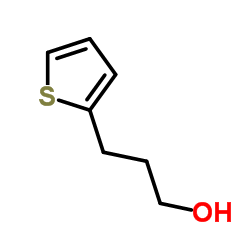 CAS#:19498-72-7
CAS#:19498-72-7 CAS#:30433-91-1
CAS#:30433-91-1 CAS#:88388-05-0
CAS#:88388-05-0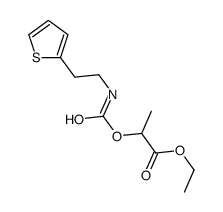 CAS#:88388-06-1
CAS#:88388-06-1 CAS#:59594-93-3
CAS#:59594-93-3
